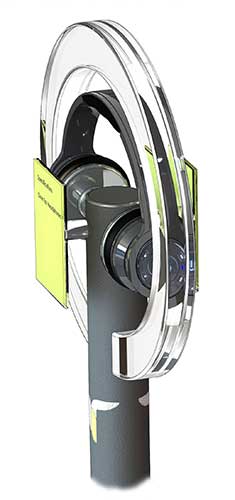Creating bespoke designs focused upon practicality in a range of materials.
We have over 100 years worth of combined experience
The high quality of the work which the expert team at ASH Plastics delivers for our clients is based on a combination of the technicians and engineers we’ve put together and the state of the art facilities they are working with. We’ve been delivering bespoke plastic forming and manufacturing services since 1982 and clients come back to us time and time again because they know they can depend upon the ASH Plastics ethos of quality, excellence and value.
Drape forming process
Clients based in sectors such as retail work with us because they know that we can deliver complex, bespoke designs for items such as free standing display units at the same time as meeting the extremely tight lead times which the retail sector often works around. One of the reasons why we can make this promise is the fact that we use highly specialised techniques such as drape forming.
Drape forming is the ideal method for creating plastic components in which a gentle curving or other shaping is needed. Our expertise in designing items from an initial brief is based on our manufacturing ability, and the fact that we know that if a design calls for a highly specific and precise curve our drape forming facilities will enable us to deliver it.
Acrylic is the material most often used for drape forming, although it is also suitable for plastics such as polycarbonate, ABS and polystyrene.

Plastic moulding techniques
Our drape forming capabilities mean that we can handle requirements in different materials and up to 1200mm x 2500mm and we also have the capacity to deal with large scale bulk orders without the high standards of the results slipping.
In simple terms, drape moulding consists of heating the plastic being used to a temperature at which it becomes pliable, than placing it over a ‘male’ mould. This is a mould which takes the form of a positive impression of the desired shape.
Once the plastic is in place pressure is applied to either the frame holding the plastic or the mould itself, to ensure that it takes the shape of the mould whilst maintaining the original thickness of the material throughout.
Delivering high precision durable results
The fact that our engineers and technicians can call on a combined experience of 100 years means that they know how to operate the complex drape forming equipment we’ve invested in so that it delivers high precision, durable results at the same time as keeping the production running seamlessly and at speed.
Contact Our Experts
If you’d like to learn more about the end-to-end one stop service we could provide for your company please get in touch. Our experts are ready and waiting to answer any questions and explain exactly what we could do to turn your ideas into a reality.
Call us or send an email and we’ll start the process of delivering the solutions you’re looking for.
Tel: +44(0)1902 450 300
Email: hello@ashplastics.co.uk
Frequently Asked Questions
Drape forming is a type of thermoforming process which utilises the heating of thermoplastics, allowing it to soften before draping it over a mould to shape it. The thermoplastic will then cool whilst draped over the curved female or male mould, hardening as it cools and setting in shape. Drape forming is typically used for large, plastic components, with acrylic being one of the most commonly used materials for this process.
Acrylic drape forming generally makes curved shapes, applicable for several industries. This technique can be used for the production of signage and retail displays, windshields and other components for the automotive, aerospace and marine sectors, medical devices, and consumer goods, amongst other products.
Perspex is a type of acrylic sheet, therefore can be shaped once heated. As a thermoplastic, acrylic softens when heated and hardens when it cools, and so to shape Perspex sheets thermoforming methods such as drape forming can be used. Other methods such as vacuum forming and pressure forming can also be used to shape Perspex sheets, utilising the same concept of heating the plastic before shaping it with a mould.
The correct polycarbonate drape forming temperature is between 145-155°C; the oven must be heated to a temperature within this range whilst drape forming polycarbonate in order to soften the plastic enough to shape it, without affecting the integrity of the sheet.
When drape forming Plexiglas, the acrylic sheet must firstly be heated to the correct temperature so that it softens. Once softened, the sheet will be malleable, so it can be removed from the oven and carefully placed over a mould.
Some processes may combine these two steps – heating the plastic over a mould so it softens around the shape of the mould. During the cooling process, the edges of the sheet may begin to curl, so should be clamped, held, or weighted down over the mould. A blanket may be used so as to slow the cooling process.
Drape forming advantages include: during the process, the plastic is not stretched, unlike some other thermoforming methods. This means the plastic preserves its thickness, and does not incur any weaknesses.
Thick section materials can also be formed using drape forming. The tooling required for drape forming is not complex, which can lower costs, and plastic which is clear or textured will maintain its features after processing.
Some drape forming disadvantages include: depending on the thickness of the plastic, the cooling time can slow down the production of drape formed goods. A unique mould will be required to create new shapes, and scrap may be increased due to factoring in clamp and trim areas.




